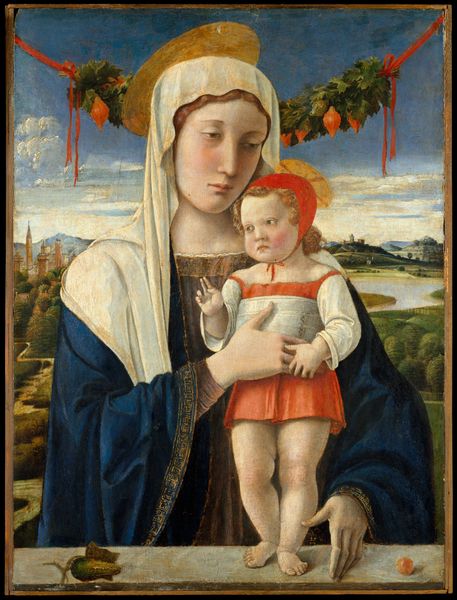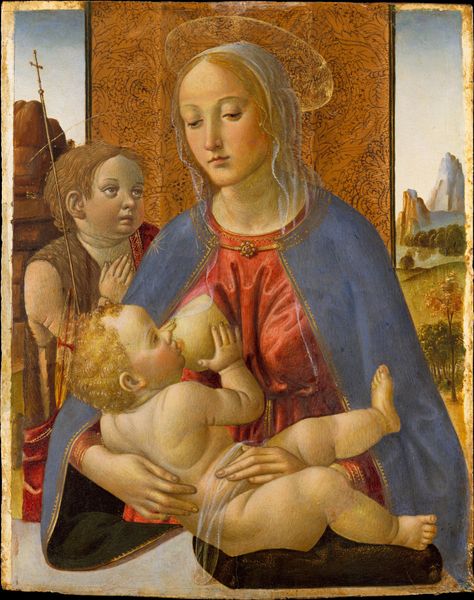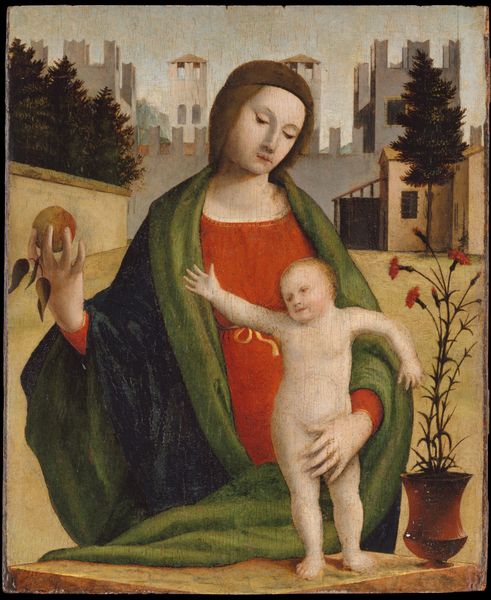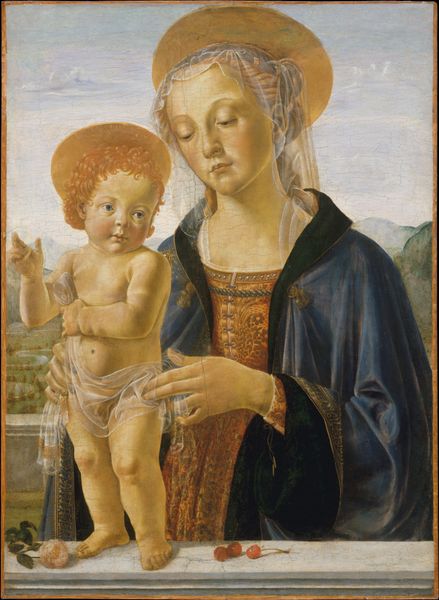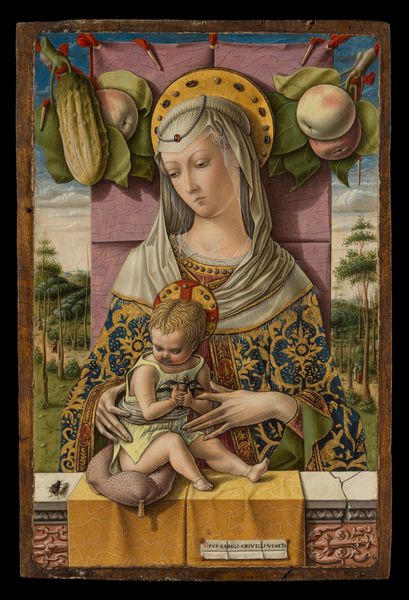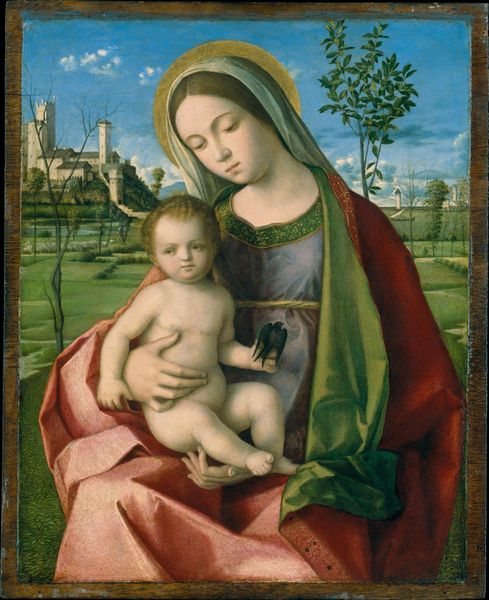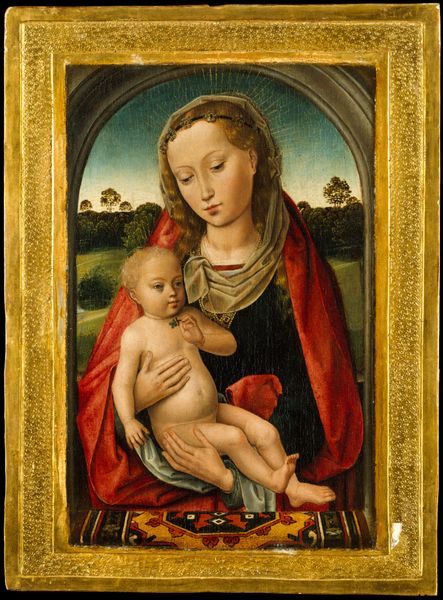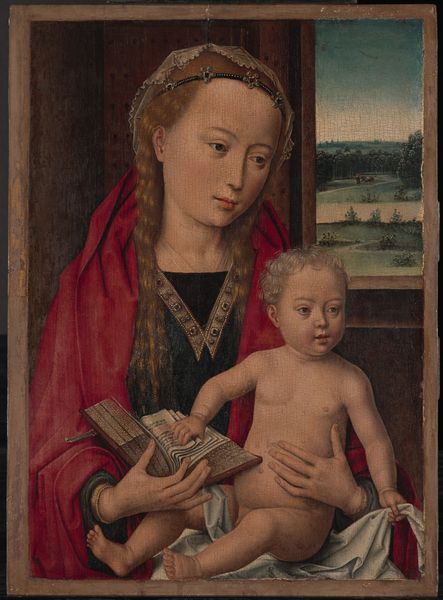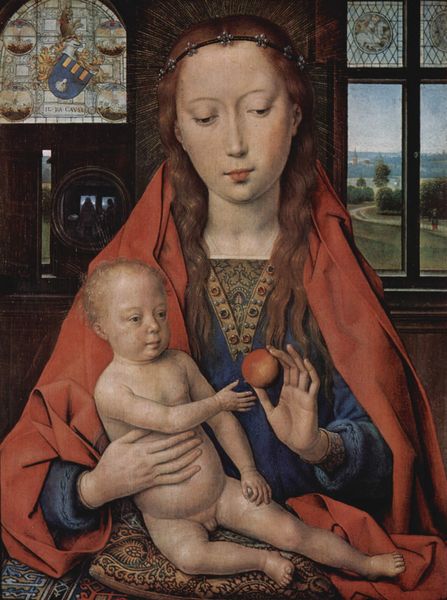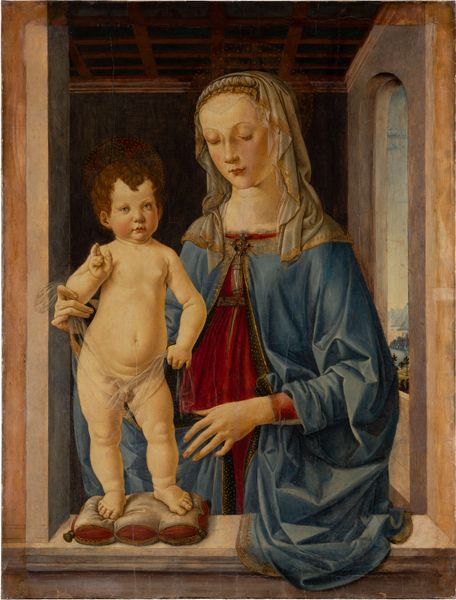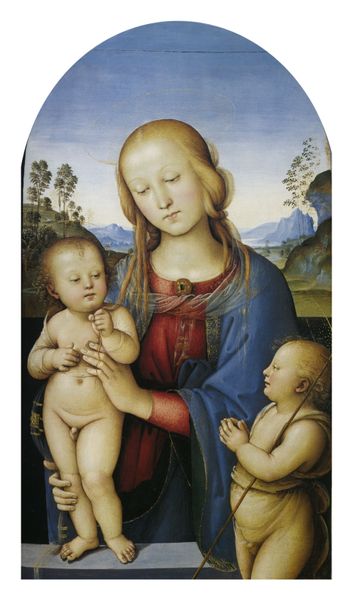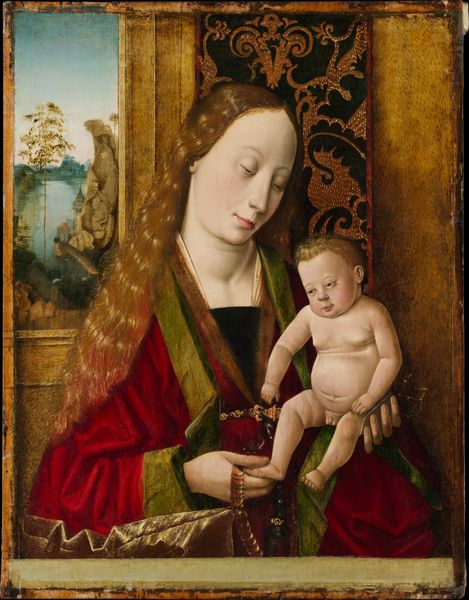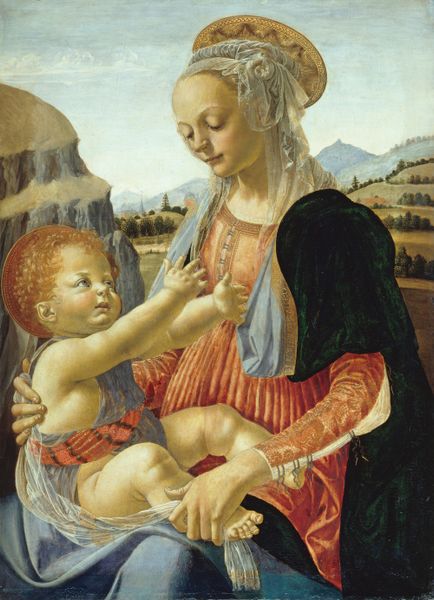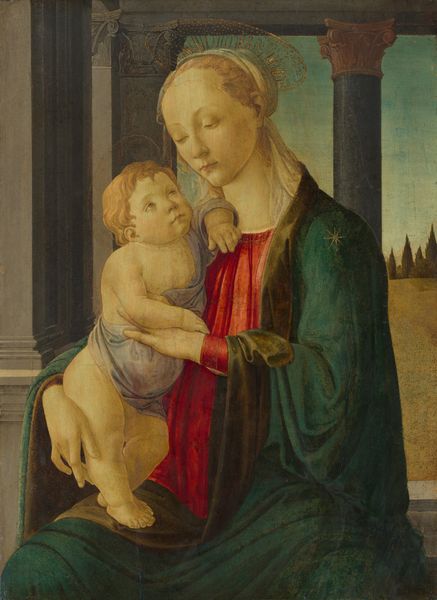
painting, oil-paint
#
portrait
#
medieval
#
allegory
#
painting
#
oil-paint
#
figuration
#
madonna
#
oil painting
#
child
#
history-painting
#
italian-renaissance
#
early-renaissance
#
portrait art
#
angel
Dimensions: 33 1/2 x 23 in. (85.1 x 58.4 cm)
Copyright: Public Domain
Editor: So, this is Cosimo Rosselli's "Madonna and Child with Two Angels," painted sometime between 1480 and 1485. It’s oil on wood, and something about the Madonna’s expression, the child's gesture, and the almost architectural setting makes me feel like it's less of a tender mother-child portrait, and more of a…staged scene? What's your take? Curator: That's an astute observation. I agree. These early Renaissance paintings are heavily invested in portraying not just piety, but civic ideals. Think about where this piece would have been viewed: likely within a private home of a wealthy Florentine family, or even in a chapel associated with them. It served to display their refinement and adherence to social expectations. Do you see the architectural frame around the figures? Editor: Yes, it reminds me a bit of a proscenium arch, like at the theatre. Curator: Exactly. It’s a consciously constructed image intended for public display, albeit within a more restricted circle than, say, a public piazza. Even the inclusion of angels with gifts echoes the ceremonial processions and rituals common in Florentine life, and the donor was most likely paying for such elements to be incorporated in their representation of a Madonna and Child to be seen and appraised by family members and other wealthy members of society. The medium and art movement itself served to elevate their personal branding. Editor: I see! So it’s almost less about religious devotion in a pure sense and more about the public performance of religious devotion, especially within specific class dynamics? Curator: Precisely. These works become records of social aspirations and cultural capital, meticulously constructed through commissions and artistic patronage. Editor: That’s fascinating! I hadn’t thought about it that way, seeing the display as more of a symbolic representation. Curator: Art history can be that tool to deepen one's understanding of imagery in ways which help highlight various contexts of society.
Comments
No comments
Be the first to comment and join the conversation on the ultimate creative platform.
